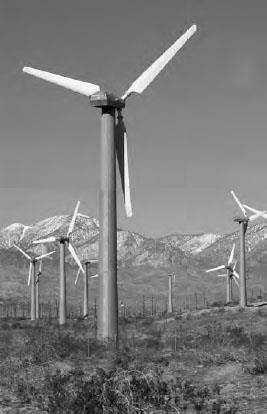Momentum and EnergyEnergy |
What are gears and why are they simple machines? |
Gears are toothed wheels which transmit torque between two shafts. The teeth prevent them from slipping, so they are called positive drives. The smaller gear in a pair is called a pinion and the larger one a gear.
Because the teeth mesh, in a given amount of time, the number of teeth engaged on the pinion equals the number on the gear. The number of teeth is proportional to the circumference of the gear that, in turn, is proportional to the radius of the wheel. Therefore if the pinion makes 1 turn, the gear will make (rpinion / rgear) turns. Because energy is conserved, the torque exerted by the gear equals the torque applied to the pinion (rgear /rpinion).
Gears are often used in an automatic transmission, converting the high-speed, small torque output of the engine to the low-speed, large torque output needed to turn the wheels. This kind of gear drive is called a step-down drive. On the other hand, in a windmill, the blades turn at a low speed but provide a large amount of torque. The gear drive in a windmill is a step-up drive. The electric generator, on the other hand, requires high speed, but can work with a smaller amount of torque. Gears also allow a bicyclist to match the speed with which she can rotate the pedal sprocket with the speed needed to drive the wheels.

